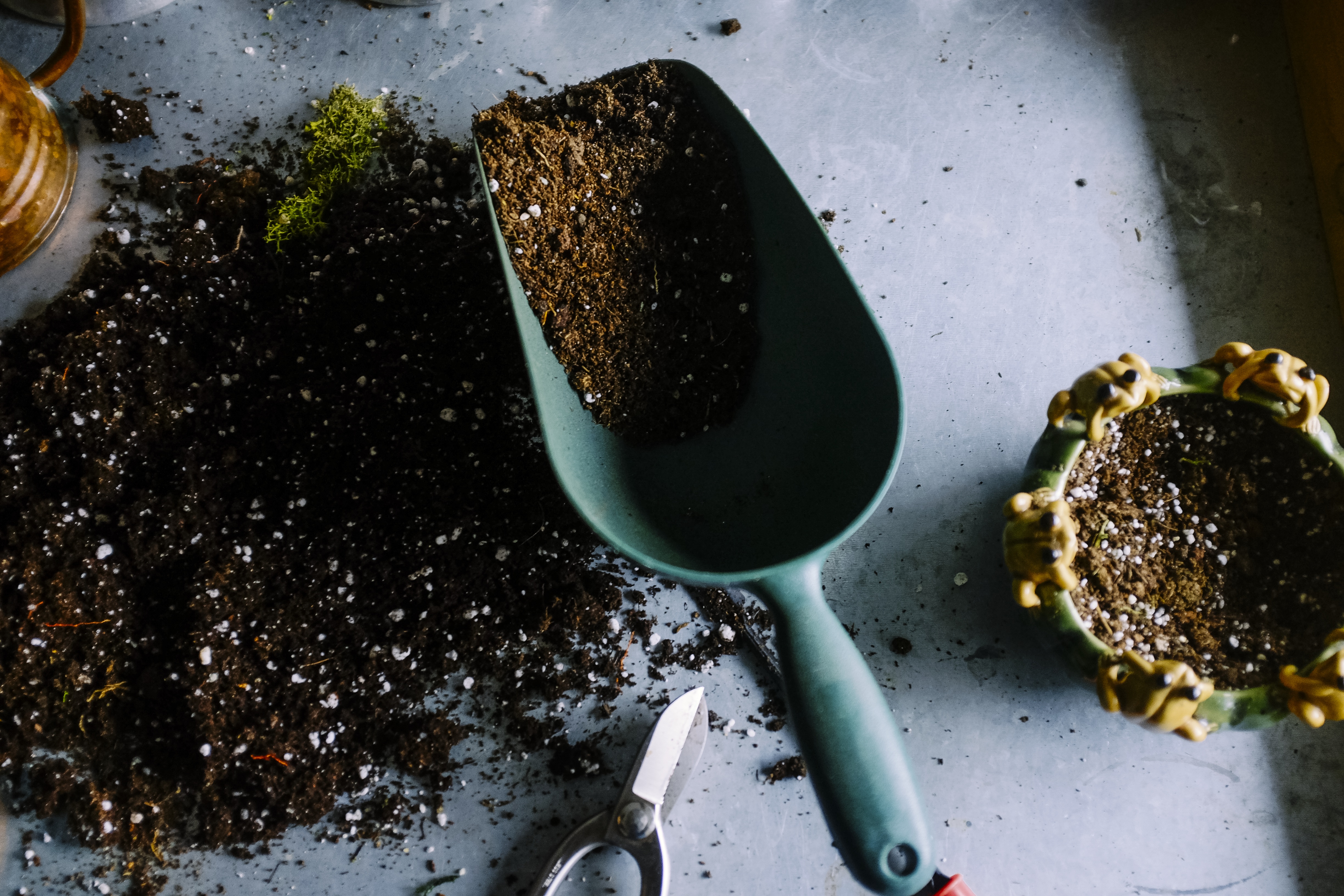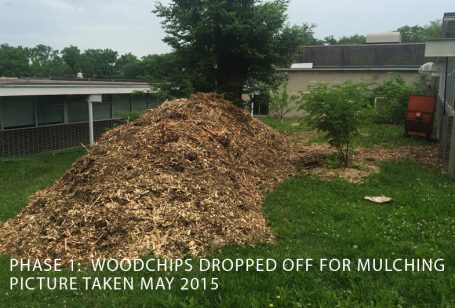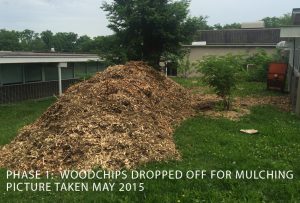Because permaculturists are are often futuristic in thinking, it’s easy to get excited about the future and miss the opportunity where we are in the moment. Many times, I find myself day dreaming so much about the mature food forest I will one day steward and I miss the fact that I need to be applying compost to the soil today. In the first part of these series on Overcoming Permaculture Destination Addiction, we talk about how to BE right where your feet are and to enjoy the plot of land you are stewarding today.
 In order to stay in our power-allies, we have to set up careful parameters in order to keep ourselves focused and living intentionally. When a permaculturist is focused the system thrives with intelligent design and abundance. When we get distracted, we end up with 30 half-finished projects around the property. Learn how to select the most important projects here, with “Five Keys to Healthy Building”. For me, there are three dangers that often creep up that are easy derailments of my efforts. These dangers have applications both in and outside of the garden.
In order to stay in our power-allies, we have to set up careful parameters in order to keep ourselves focused and living intentionally. When a permaculturist is focused the system thrives with intelligent design and abundance. When we get distracted, we end up with 30 half-finished projects around the property. Learn how to select the most important projects here, with “Five Keys to Healthy Building”. For me, there are three dangers that often creep up that are easy derailments of my efforts. These dangers have applications both in and outside of the garden.
Danger #1: Planting Outside of Your Zone
We have all been at the greenhouse and saw “THE PLANT”. You know the one… it’s the one you don’t have in your garden that is so perfect and exotic that you absolutely have to buy it. Even if the plant is just outside of our growing zone, we usually still buy it with the thought in mind that we can nurture it, mulch, or maybe even take it in the greenhouse for the winter. The fact remains, the plant often looks good at the plant store, because it was just shipped there from Florida and is full of fertilizers. That is a short lived reality. Once those two factors wear off, we all know how the story goes – the plant struggles in our midwest garden, will sometimes make it through one winter, but is usually a pitiful stem in the second season…and dead shortly thereafter. A mistake I have made more than once myself.
Don’t get me wrong, it is fun to plant outside of our planting zone and sometimes (rare as it may be), we can make it work. However, there is a reason those planting zones exist. That zone is what is optimal for the plants growth and ability to thrive. Yes, the little plant might survive in your garden, but the chances of it thriving in a system it wasn’t intended for are slim. As a gardener, I have to deny myself the momentary pleasure of buying that tropical plant in order to give it a better chance in the system it was created for. Zones exist for a reason – they are the unspoken boundaries of the landscape that allow for abundance. We cannot simply erase these invisible lines simply because we desire the tropical tree enough. We cannot wish away the boundaries that nature has drawn.
Danger #2: Letting Books Frame Your Reality
When I first started researching permaculture, one of the ideal trophies many people touted on about were their “herb spirals”. These seemed to be the golden children of permaculture design that everyone wanted to have. As I read my first few books, I started to think to myself, “If I don’t have one of the spirals like this – I’m going to be a bad permaculturist.” So, during my first PDC, I was waiting for Geoff Lawton to introduce the concept, however, when he finally talked about it, he told us upfront that it was NOT a design for everyone. Lawton actually tried to talk us out of creating one before he gave the mechanics of designing it. He specifically said, “there are some growing scenarios that make it a really wise choice, but there are 10 other scenarios that make it a permaculture fantasy.” They key to a healthy system is doing what IS right, not creating something because it FEELS right. So what makes it right? The system. It is the difference between a system being able to sustain an element and the element actually being good for the system as a whole, where they both thrive because of its introduction.
Just because it’s do-able in someone else’s system, does not mean that it is the best course of action for your scenario.
Danger #3: Jumping the Gun
 One of the hardest lessons I have learned in permaculture is that real growth takes real time. Real abundance takes ground work above all else. I have planted hundreds of trees and bushes the last few years, and some of them do really well while others thrive. The difference is generally found in how much time I spend nurturing the soil vs. how much time I spend playing the with leaves. On the trees which I have mulched, wood-chipped, composted, and sprayed with beneficial micro-organisms, I see immense growth and health. However, there are some trees that I focused on foliar sprays which have really struggled. The lesson learned regarding my apple trees is to allow 3-5 years of root growth on new fruiting trees BEFORE allowing them to have fruit set. This creates a tree that will be healthy for 100 years, but requires me to forgo the momentary pleasures of a few apples. The waiting process is painful, but it’s worth it in the end.
One of the hardest lessons I have learned in permaculture is that real growth takes real time. Real abundance takes ground work above all else. I have planted hundreds of trees and bushes the last few years, and some of them do really well while others thrive. The difference is generally found in how much time I spend nurturing the soil vs. how much time I spend playing the with leaves. On the trees which I have mulched, wood-chipped, composted, and sprayed with beneficial micro-organisms, I see immense growth and health. However, there are some trees that I focused on foliar sprays which have really struggled. The lesson learned regarding my apple trees is to allow 3-5 years of root growth on new fruiting trees BEFORE allowing them to have fruit set. This creates a tree that will be healthy for 100 years, but requires me to forgo the momentary pleasures of a few apples. The waiting process is painful, but it’s worth it in the end.
This month, I took some young 7th grade students out to the apple trees to look at the branches during the fall. On the trees, you can see the buds setting for the next season. I told them how we have been waiting for several years to have apples, because the focus has been on root growth, and how next year there will finally be apples! Here is the Facebook post I wrote that day:
“…Because I am a garden nerd, I know that next year I will have more apple blossoms than ever before. I can see the bud set starting this fall for the next year. We are nearly past the tree infancy stages and entering our first production years. We have labored hard to create the soil that they could thrive in, and have provided companion planting guilds to ensure a healthy eco-system. All the while, we have strategically plucked the blossoms and early fruit to prevent apples from forming the first few years. However, this fall, I see buds forming for next year that we will allow to produce fruit! The promise of fruit – finally! If I open up the buds to take a peek at the promises before their time, I cannot simply close them back up and hope for them to bear later. Once opened, they cannot be closed. The buds need the hardening off of the winter to prepare for the year ahead. Otherwise, should I act in haste, the fruit sets will fall to the ground. As a gardener, I watch and wait, and I do my part today to tend the soil and provide a covering.”
Overcoming Permaculture Destination Addiction
So, be patient. Wait. Tend the soil where you. Be wise. Observe the plot of land that you are responsible for stewarding and ask yourself what is best not only for the individual tree, but also the planting build; not only what is good for the guild, but also the system as a whole. Be where are you are right now and care for the plot of land you are responsible for.
Don’t worry about what land you are going to steward in the next 10 years, just enjoy today and get outside in the garden.



 For the urban gardener or dirt ninja, we tend to start new vegetable gardens, fruit tree guilds, and hugelkultur swales, but all too many times, get sidetracked from focusing on one project only to start another one. On most permaculture worksites, you can walk around a see 10-15 (or more) projects that are started, but yet to be successfully completed. On these worksites, one dynamic which often follows is the systems are not maintained, managed, or allowed to yield at their fullest potential. Not to mention the unpleasant side-effect, which includes ugly properties with piles of “stuff”. When managed well, a permaculture system should both create successful yield, and provide beauty for the eye.
For the urban gardener or dirt ninja, we tend to start new vegetable gardens, fruit tree guilds, and hugelkultur swales, but all too many times, get sidetracked from focusing on one project only to start another one. On most permaculture worksites, you can walk around a see 10-15 (or more) projects that are started, but yet to be successfully completed. On these worksites, one dynamic which often follows is the systems are not maintained, managed, or allowed to yield at their fullest potential. Not to mention the unpleasant side-effect, which includes ugly properties with piles of “stuff”. When managed well, a permaculture system should both create successful yield, and provide beauty for the eye.
 When we actively engage in a permaculture creative process, these 5 keys to healthy building help us live from a peaceful, balanced, and productive place. In order to experience the power of a focused life, it’s important to revisit these five keys and ask ourselves a few questions. First, “What am I committed to in each of these areas right now?” The second question is “How do I limited myself to ONE commitment per area?” Finally, “Am I overcommitted and lying to myself about what I can responsibly accomplish?”
When we actively engage in a permaculture creative process, these 5 keys to healthy building help us live from a peaceful, balanced, and productive place. In order to experience the power of a focused life, it’s important to revisit these five keys and ask ourselves a few questions. First, “What am I committed to in each of these areas right now?” The second question is “How do I limited myself to ONE commitment per area?” Finally, “Am I overcommitted and lying to myself about what I can responsibly accomplish?” Make a list of these five areas and what you are currently doing in each. Narrow it down to five projects total (
Make a list of these five areas and what you are currently doing in each. Narrow it down to five projects total (